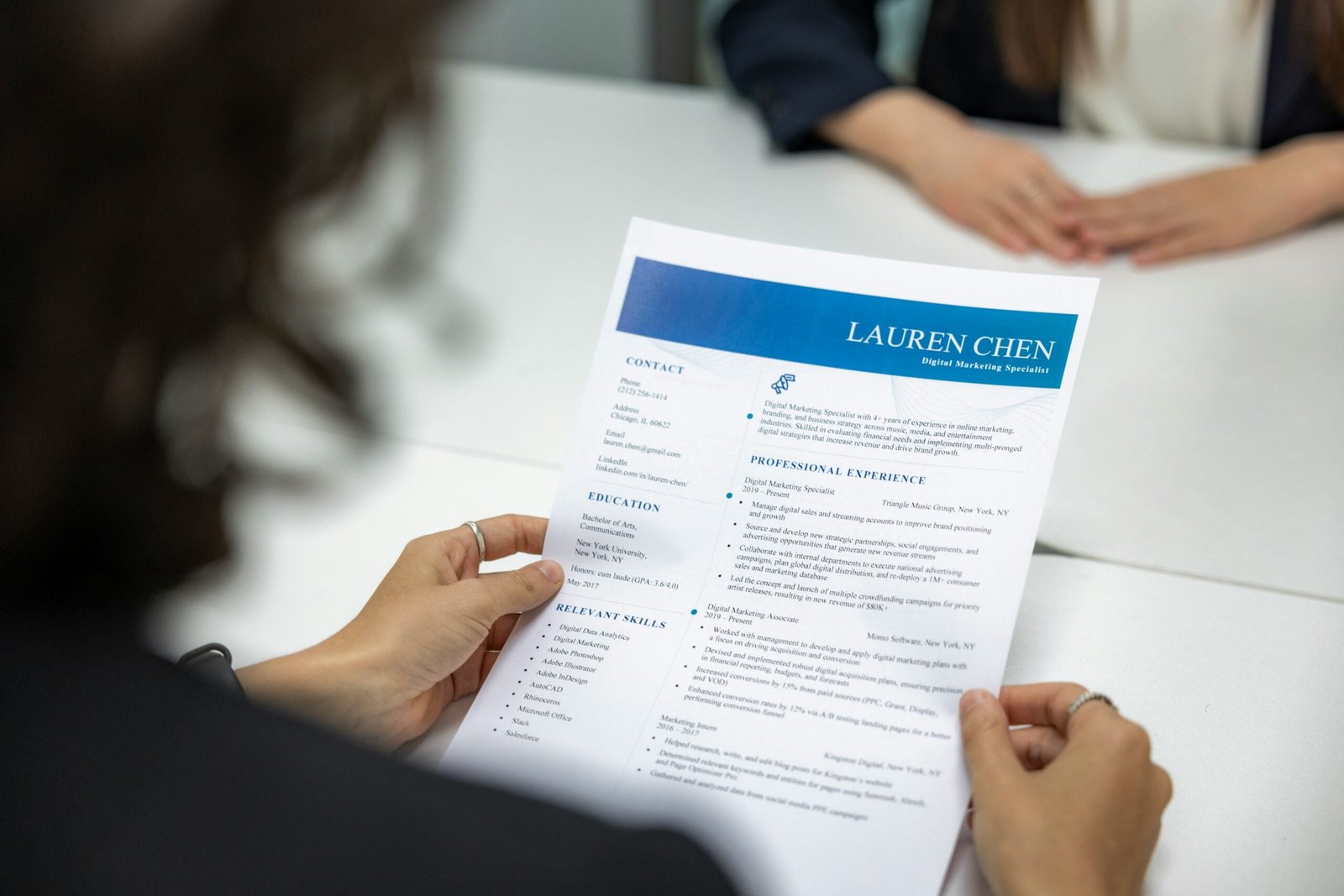Understanding and Addressing Your Employment Gap
Employment gaps are often a source of anxiety for many job seekers, especially when preparing for their first interview after a break. However, it is essential to understand that such gaps are increasingly common and can be addressed positively. The key lies in being honest about your time away from work and framing it as a period of personal and professional growth.
One of the most effective strategies for addressing an employment gap is to clearly explain the reasons behind your break. Whether it was for personal development, travel, further education, or caregiving, your honesty will reflect your integrity. For instance, if you took time off to care for a family member, you could highlight the skills you developed during this period, such as time management, problem-solving, and empathy.
Similarly, if your employment gap involved traveling, you can emphasize how this experience broadened your cultural understanding, adaptability, and communication skills. For those who pursued further education or professional certifications, it is crucial to showcase how these endeavors have enhanced your expertise and prepared you for the current job market.
When it comes to weaving this narrative into your resume and cover letter, consider creating a dedicated section that outlines your employment gap. This approach allows you to provide context and demonstrate proactive efforts during your time off. For instance, you might include a section titled “Professional Development and Personal Growth” where you detail relevant activities and achievements. In your cover letter, briefly mention your employment gap and focus on the positive outcomes, such as newly acquired skills or insights.
By addressing your employment gap with transparency and confidence, you can shift the focus from the break itself to the valuable experiences and growth it facilitated. This approach not only alleviates potential concerns from employers but also positions you as a well-rounded and resilient candidate ready to re-enter the workforce.
Updating Your Skills and Knowledge
Returning to the workforce after an employment break can be challenging, but identifying and bridging any skill gaps is a crucial step to ensure you are competitive in the job market. Start by evaluating the current demands and trends in your industry. This can be done by reviewing job postings for the roles you are interested in and noting the required skills and qualifications.
Once you have identified the skills you need to update or acquire, consider taking relevant courses. Many online platforms offer flexible learning options, allowing you to study at your own pace. Popular platforms like Coursera, Udemy, and LinkedIn Learning provide courses across various fields, often taught by industry experts. Completing these courses can also earn you certifications that bolster your resume.
Engaging in self-study is another effective way to update your skills. Utilize free resources such as YouTube tutorials, industry blogs, and open courseware from reputable universities. Additionally, reading professional journals and subscribing to industry newsletters can help you stay informed about the latest developments and best practices in your field.
Networking with industry peers is invaluable. Attend webinars, workshops, and industry conferences to connect with professionals and learn from their experiences. Joining professional associations or online forums related to your industry can also provide opportunities for mentorship and collaboration. These interactions not only keep you informed but also expand your professional network, which can be beneficial during your job search.
When preparing for interviews, it is essential to showcase the efforts you have made to update your skills and knowledge. Highlight any courses, certifications, or self-study activities on your resume and be prepared to discuss them during the interview. Demonstrating your commitment to continuous learning and professional development will reassure potential employers of your dedication and readiness to re-enter the workforce.
Revamping Your Resume and LinkedIn Profile
Revamping your resume and LinkedIn profile is a crucial step when preparing for your first interview after an employment break. The goal is to present a cohesive narrative that highlights your current skills and experiences while effectively downplaying the employment gap. Start by updating your resume to reflect any freelance, volunteer, or part-time work you engaged in during your break. These experiences are valuable and help demonstrate your ongoing development and commitment to your field.
When structuring your resume, consider using a functional or combination format rather than a chronological one. This approach allows you to emphasize your skills and accomplishments over the timeline of your employment history. Make sure to include a strong opening summary that succinctly outlines your professional background and what you bring to the table. Highlight transferable skills that are relevant to the job you are applying for, such as project management, communication, or technical expertise, which you might have honed during your break.
In addition to your resume, your LinkedIn profile needs to be optimized to attract potential recruiters. Update your headline to reflect your professional identity and current job aspirations. Make use of the summary section to tell your story, focusing on your skills, recent achievements, and the value you can add to a prospective employer. Include any freelance projects, volunteer work, or courses completed during your employment gap in the experience section. This not only shows that you have been active but also that you have continued to grow professionally.
Endorsements and recommendations can significantly enhance your LinkedIn profile. Reach out to former colleagues, mentors, or clients to provide testimonials that speak to your abilities and work ethic. Finally, ensure your profile picture is professional and up-to-date, as it forms a crucial part of your online persona. By carefully revamping your resume and LinkedIn profile, you can effectively bridge the employment gap and present yourself as a strong candidate for your next role.
Preparing for the Interview
Thorough preparation is critical for acing your first interview after an employment break. Start by researching the company extensively. This includes understanding its mission, values, products, services, and recent news. Familiarize yourself with the company’s culture and the specific role you are applying for. This knowledge will enable you to tailor your responses to reflect your alignment with the company’s goals and needs.
Practicing common interview questions is another essential step. Prepare answers for questions like “Tell me about yourself,” “Why do you want to work here?” and “What are your strengths and weaknesses?” Be ready to discuss your employment gap confidently. Frame it positively by highlighting any proactive steps you took, such as further education, volunteer work, or personal projects that enhanced your skills. This can reassure employers that you remained productive and committed to personal and professional growth during your break.
Mock interviews can be incredibly beneficial. Conducting mock interviews with friends, family, or career coaches can provide valuable feedback and help you improve your responses. They can also assist you in identifying any nervous habits or areas of improvement. Seek honest feedback to refine your answers and boost your confidence.
Conveying enthusiasm and aligning your experiences with the job requirements are crucial. Demonstrate your passion for the role and the company, and clearly articulate how your past experiences and skills make you a suitable candidate. Highlight any relevant experiences from your break that align with the job requirements, showcasing your adaptability and continuous learning attitude.
Finally, do not underestimate the importance of body language, attire, and punctuality. Maintain eye contact, offer a firm handshake, and sit up straight to exude confidence. Dress appropriately for the company’s culture, erring on the side of professionalism. Arrive early to the interview to demonstrate your punctuality and respect for the interviewer’s time.
By following these preparation strategies, you can present yourself as a confident, capable, and enthusiastic candidate, ready to re-enter the workforce successfully.



Be the first to comment